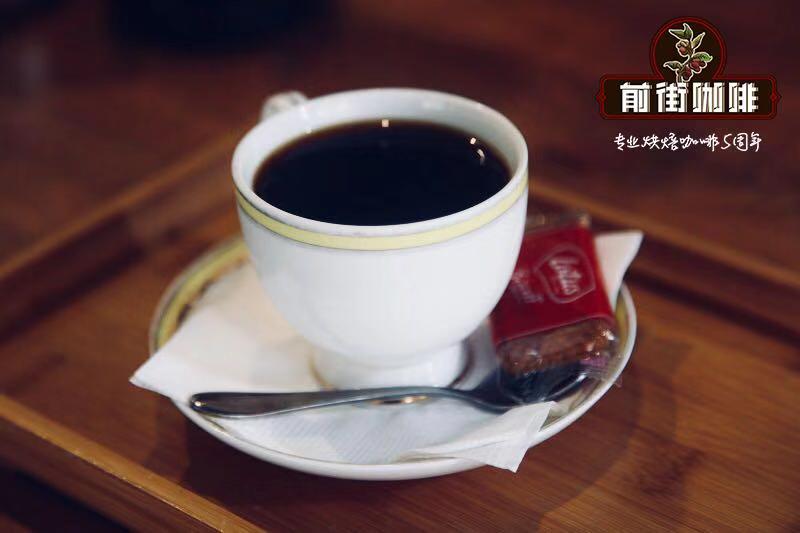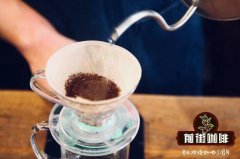What is the difference between coffee regional flavors?| What factors change coffee flavor?

Professional coffee knowledge exchange more coffee bean information please follow the coffee workshop (Wechat official account cafe_style)
Coffee production is mostly located between the Tropic of Cancer, 25 degrees north of the tropical or subtropical equator and 30 degrees south of the equator. An area with an annual average temperature of 16-25 degrees Celsius, no Frosts Descent and rainfall of 1600-2000 mm. At present, coffee is mainly produced in more than 70 countries, most of which are located in areas with an altitude of 300,400m, and coffee trees are sometimes planted on highlands at an altitude of 2000-2500 meters, but those planted on hillsides above 1500 meters above sea level have better quality.
Coffee trees grow in tropical or subtropical agricultural gardens centered around the equator and called coffee belts.
In addition, growing coffee also requires daylight and proper shade, which is most suitable for planting on fertile soil or volcanic ash soil. Therefore, the origin of coffee is widely distributed in South America, Central America, the West Indies, Asia, Africa, Arabia, the South Pacific and Oceania. Such as Ethiopia and Tanzania in Africa, Brazil, Colombia, Jamaica, Guatemala, Mexico, Honduras, Costa rica in Central and South America, Vietnam and Indonesia in Southeast Asia, are all major coffee producers.
In terms of production, Central and South America accounts for about 60 per cent of the world's coffee production, Africa and Arabia account for about 20 per cent, and the remaining 20 per cent are distributed in Asian countries and islands.
In South America, Brazil accounts for 30-50% of the world's output, while Colombia accounts for 10-20%. At present, the coffee production of Vietnam in Asia has surpassed that of Colombia, and Indonesia has become the fourth largest coffee producer in the world.
African bean flavor: Ethiopian coffee has a strong orange flavor, while Kenya coffee has strong raspberry aromas, sour aromas of black plum juice and grapefruit, and sweet sugarcane aromas. The orange aroma of Ethiopian coffee and the raspberry flavor of Kenyan coffee are the most important features of African beans, and they are also the most attractive to coffee fans.
The flavor of Central and South American beans: generally speaking, the flavor is relatively regular. The Brazilian coffee is soft and sweet, while the Costa Rican coffee is gentle and supple, with a blend of sour, sweet and chocolate aromas. Panamanian coffee has strong aromas of citrus, jasmine, almond, mango and nectar, with bright acidity and a strong resemblance to Ethiopia's national treasure bean Yega Sheffield. Pacamara coffee has a pleasant spicy aroma, a hint of ginger, sour and fruity. The most important feature of Nicaraguan coffee is its charming almond flavor, which tastes stuffy.
Asian beans and island flavor: mellow thickness is higher than Central and South American beans and African beans, but the sour taste is lower, the flavor is slightly sunken wood, herbs, spices and soil, and the low stuffy aroma is higher than the rising sour flavor. Island beans are relatively light and gentle, with a light and elegant tone.
END
Important Notice :
前街咖啡 FrontStreet Coffee has moved to new addredd:
FrontStreet Coffee Address: 315,Donghua East Road,GuangZhou
Tel:020 38364473
- Prev

Does coffee need to be fermented? what is it? can you still drink coffee when it is fermented? what's the flavor?
Professional coffee knowledge exchange more coffee bean information please follow the coffee workshop (Wechat official account cafe_style) END
- Next

How about Arabica Coffee? what kind of Arabica Coffee is Russian Arabica Coffee?
Professional coffee knowledge exchange more coffee bean information Please pay attention to the coffee workshop (Wechat official account cafe_style) Coffee varieties can be divided into Arabica, Robusta and Liberica if they are biologically classified. The main varieties to drink in the world are Arabica and Robusta. Due to the low production of Rabrika or
Related
- Beginners will see the "Coffee pull flower" guide!
- What is the difference between ice blog purified milk and ordinary milk coffee?
- Why is the Philippines the largest producer of crops in Liberia?
- For coffee extraction, should the fine powder be retained?
- How does extracted espresso fill pressed powder? How much strength does it take to press the powder?
- How to make jasmine cold extract coffee? Is the jasmine + latte good?
- Will this little toy really make the coffee taste better? How does Lily Drip affect coffee extraction?
- Will the action of slapping the filter cup also affect coffee extraction?
- What's the difference between powder-to-water ratio and powder-to-liquid ratio?
- What is the Ethiopian local species? What does it have to do with Heirloom native species?

